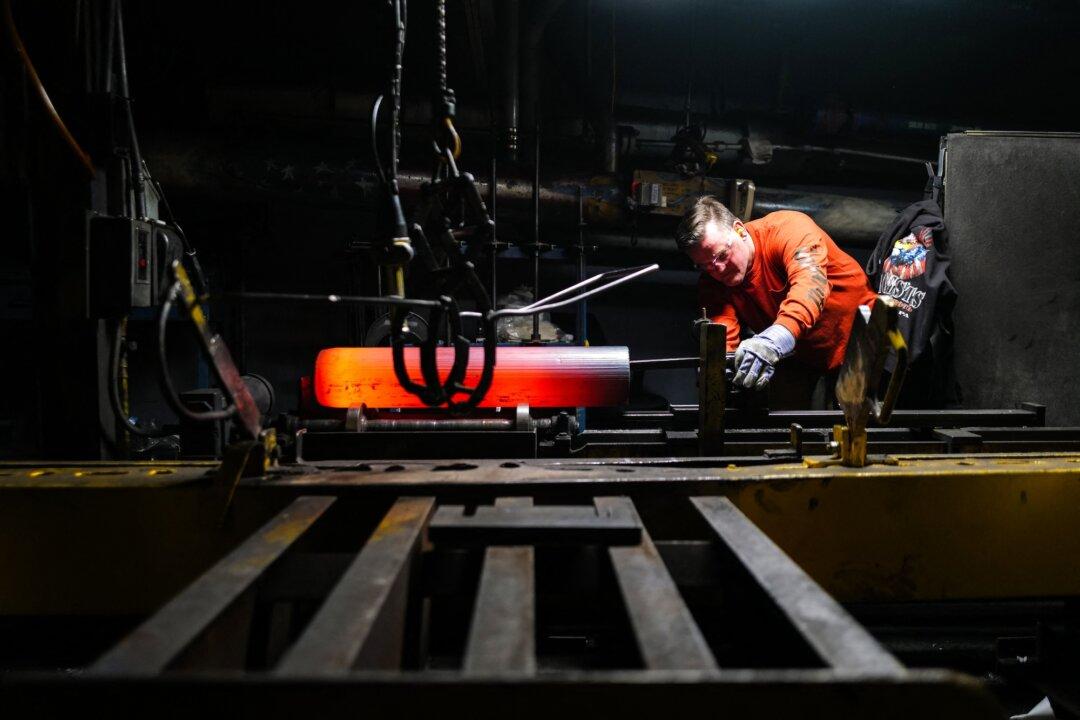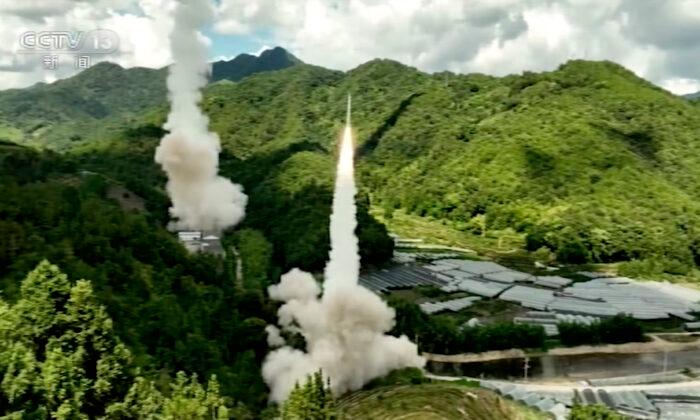It’s been a long time coming, but Japanese reports on June 11 revealed that the Chinese Communist Party (CCP) and its People’s Liberation Army (PLA) have realized a long-held ambition: to build and deploy an aircraft carrier battle group.
That means that China’s People’s Liberation Army Navy (PLAN) isn’t just able to deploy an aircraft carrier with a working air-wing of combat aircraft, but this carrier is also protected by escort combat ships and sustained by large, fast replenishment ships. This allows the carrier to undertake offensive missions against adversaries, while escort ships carry the burden of defending the carrier.
Also on June 11, the Japanese Ministry of Defense reported that a PLAN aircraft carrier battle group had cruised past the strategic Japanese island of Okinawa and was on its way to the Miyako Strait to depart the “First Island Chain.”
So deployed, this PLAN carrier battle group could assist blockade or strike operations directed at the eastern side of Taiwan. It also could assist attacks against the southern islands of Japan’s Ryukyu island chain, which might host combat aircraft and anti-ship missiles to disrupt attacks against Taiwan.
Liaoning can carry 20 to 25 J-15s, an improved copy of the Russian Sukhoi Su-33 carrier fighter. While its range and payload are slightly limited because it’s launched via a “ski jump” instead of a catapult as on U.S. carriers, it’s a respectable fourth-generation fighter, which will be improved. Liaoning also carries about 12 large Z-18 helicopters equipped for anti-submarine and early-warning radar missions.
A second PLAN carrier, modeled on Liaoning with slight modifications, is in advance trials. It may soon begin testing with J-15 fighters and could be commissioned in one or two years.
What is also important to note is the composition of the Liaoning battle group. It includes one Type 052D multi-role destroyer; one Type 051C air defense destroyer; two Type 054A multi-role frigates; and one new large Type 901 underway replenishment ship. The combat support ships feature 128 vertical launchers for anti-aircraft, anti-submarine, and soon, anti-ship ballistic missiles. The Type 051C is equipped with 48 Russian-made S-300MF anti-aircraft missiles.
While the PLAN may in the next few years have only two carrier battle groups, compared to the 10 maintained by the U.S. Navy, it’s important to note that China’s is the only aircraft carrier battle group operated by an Asian navy.
On June 12, the South China Morning Post cited the People’s Daily social media account Xiakedao saying, “It is very unlikely that Chinese carriers will ever be involved in resolving maritime disputes with neighboring countries.” Such statements are not credible.
Also, while the Liaoning carries fewer aircraft than a U.S. carrier (up to 90), the PLAN can today compensate for its weakness—both in carrier battle groups and in carrier aircraft—with weapons the U.S. Navy doesn’t have today.
For example, in January, the PLAN held exercises in the South China Sea with the PLA’s new Rocket Force. PLAN ships, and perhaps submarines, coordinated simulated strikes with the Rocket Force’s medium- and intermediate-range anti-ship ballistic missiles. In addition, the PLA Air Force is testing a new medium-range air-launched ballistic missile, most likely carried by Xian H-6 medium bombers. The PLA will first try to sink U.S. Navy carriers with long-range ballistic missiles, coordinated with strikes by land-based aircraft, submarines, and then aircraft carriers and ships.
Of special note, the Liaoning carrier battle group has included the new 50,000-ton Type 901A underway replenishment ship. Capable of transferring fuel, ammunition, and solid stores, Type 901A’s are very similar to the U.S. Navy Supply-class.
Replenishment ships of this size can support global deployments for the PLAN’s carrier battle groups. In the next one or two years, it should be expected that the PLAN carrier battle groups may deploy into the South China Sea, the Indian Ocean, or to advance China’s naval diplomacy in the South Pacific. They also will be calling into ports in Africa and Latin America before long.
At the end of May, China’s state television aired a program stating that China would build 10 aircraft carriers by 2049, the 100th anniversary of the CCP dictatorship. The PLA will likely build its first nuclear-powered aircraft carrier in the mid- to late-2020s, followed by nuclear-powered escort cruisers and perhaps also nuclear-powered replenishment ships.
Washington must now determine how best to counter multiple globally deployed PLAN carrier battle groups. While it will remain important for the U.S. Navy to sustain 10 or more of its own carrier battle groups, the U.S. Navy, Air Force, and Army require large numbers of medium- and intermediate-range ballistic and cruise missiles capable of attacking China’s aircraft carrier battle groups at very long ranges.
In the 2002 issue of the congressionally mandated Department of Defense “China Military Power Report,” on page 20, it was stated that “while continuing to research and discuss possibilities, China appears to have set aside indefinitely plans to acquire an aircraft carrier.”





